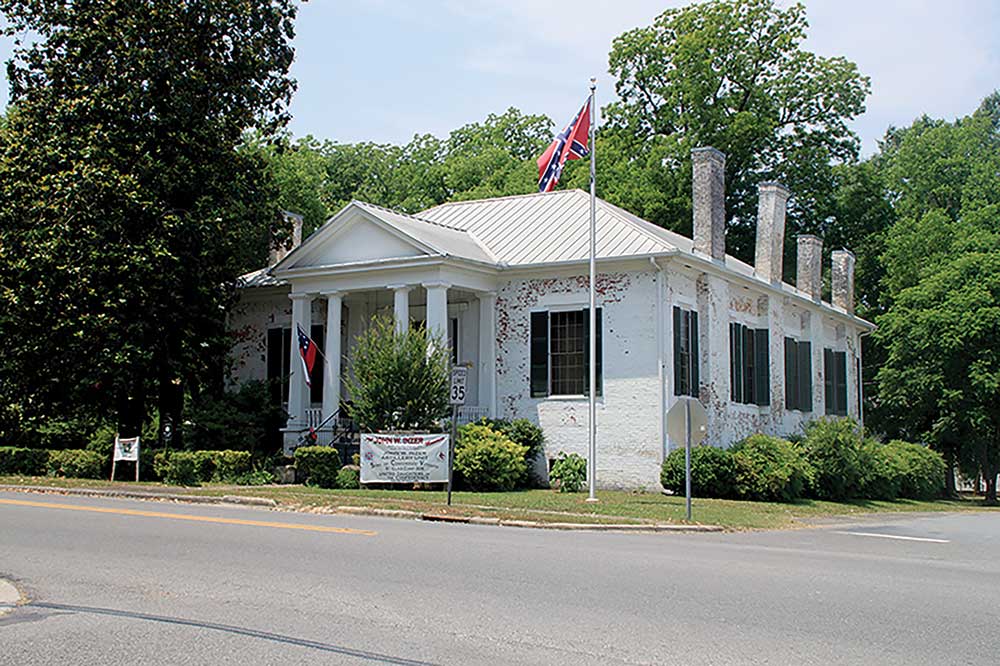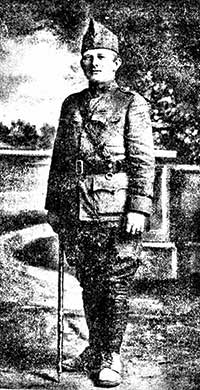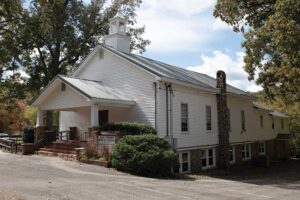
The story of Judge James T. Green and his family
Story by Robert Debter
Photos submitted
From its nondescript exterior, it looks just like many a building scattered throughout Alabama, just an old National Guard armory that has seen better years. But what or who – lies underneath – is the story here.
It may mark the end of an era for this St. Clair County couple, but it preserves the story behind the beginning of their life and lineage in the county, rooted long ago in royalty.
James Thomason Greene was born on Feb. 2, 1849, to John Greene, who was born in Cork County, Ireland, in 1814, and came to America in 1832, and Elizabeth (Thomason) Greene, a descendant of Mary, Queen of Scots.
Elizabeth’s father, James Thomason, served as St. Clair County’s first probate judge from Nov. 20, 1818–Nov. 20, 1819, and her brother, John Isham Thomason, also served a probate judge from Dec. 13, 1845–Jan. 15, 1848, and Jan. 30, 1850–June 8, 1850.
Her grandfather, John Duett Thomason, was a Revolutionary War soldier who held a commission in the Carolina Regiment and was wounded at the Battle of King’s Mountain. After the war he made his way through South Carolina and Georgia, he came to St. Clair County. He had acquired many acres in modern day Springville and St. Clair Springs through a land lottery for men with Revolutionary War service.
It was this patriot who married Elizabeth Stuart Diamond, and their final resting place is underneath the Ashville Armory. Elizabeth’s mother, also named Elizabeth, was born into the House of Stuart and was listed in Burke’s Peerage until her name was removed after she married a commoner named John Diamond.
Charles Dickens once said, “In love of home, the love of country has its rise.” It seems a fitting proverb for John Duett Thomason and one that was transferred to his granddaughter and great-grandson. Elizabeth was an ardent Southern patriot who, in the tumultuous and dark military rule of Ashville following the subversion of the Confederate government, raised the Confederate flag on a fishing pole line each morning. According to legend, she slept under the flag each night for she said that this gave her a sense of complete safety and security.
At the age of 13, James enlisted as private in the Confederate States Army and served until ill health forced him to leave service.
The young James was a public, spirited man and in 1871 and began reading law. The next year saw him admitted to the bar and also appointed to register in chancery, a position which he would hold until 1880.
From 1876–1881, he served as chief clerk to Judge Leroy Franklin Box, later state superintendent of education, at his office in Montgomery. Greene would go on to represent St. Clair County in the Alabama State Legislature from 1884 to 1886 and during his term was chairman of the Committee on Education.
He continued to serve the people of St. Clair County as probate judge, following in the footsteps of his grandfather and uncle, from Sept. 14, 1887–Nov. 1, 1892. Judge Greene practiced law in Ashville from 1872–1876, 1881–1886 and 1892–1901. He also opened the “Law Office of Inzer & Greene” with Judge John W. Inzer in Ashville. His son, Gardner Greene, would one day study law.
On October 13, 1873, he married Margaret Ashley and to them were born 10 children: Otis, Claude, James Gardner, who be known for his heroism in World War I, Postelle, Evelyn, Ethel, Margaret, Marie, Nelle and John Benjamin.
Judge Greene was a Mason and a member and Worshipful Master of Cataula Lodge No. 186 in Ashville, a member of Lodge No. 443 in Anniston; a royal host of Anniston chapter, Royal Arch Masons, Chancellor Commander of Anniston lodge, No. 46, Knights of Pythias. He was also an Elk and a member of the Independent Order of Odd Fellows.
Judge Greene died on April 10, 1910, in Pell City while trying to recover from a severe cold that had settled on his lungs. His obituary notes, “He was one of St. Clair’s most distinguished citizens and by his strength of character and kindly disposition had held the love of our people for several generations.”
His son, the gallant World War I hero Gardner Greene, was born in Ashville on April 16, 1878, and after finishing his primary education, studied at the Inzer & Greene Law Office, run by his father and Judge John Washington Inzer at Ashville. He was licensed to practice law in 1897.
At the age of 20, the young lawyer volunteered for the Spanish-American War and served with distinction as a private and non-commissioned officer. In 1900, he entered the George Washington University Law School, graduated in 1901, and soon after, he entered service in the United States Census Bureau. In 1908 he opened a law office in Pell City and continued to practice there until he entered service in the Army.
Greene organized the Pell City Guards, known as “Company C” Fourth Alabama in 1915 – before the regiment was demobilized, war was declared on Germany, and the Fourth Alabama became the 167th United States Infantry. It was one of the regiments of the now famous “Rainbow Division.”
Captain Greene, in command of Company C, sailed for France and entered the trenches of the Toul sector early in 1918. He served continuously with his company until July 31, when he was gassed, but under skillful treatment recovered and returned to command his company in late August.
On September 12, 1918, while leading his troops into battle with the German forces in the Saint Mihiel sector, fire from a machine gun struck him in the forehead, and he died instantly. He was buried at the Saint Mihiel American Cemetery and Memorial in Lorraine, France.
Greene was universally loved and respected and was popular in his regiment. He was a Mason, a member of the Kappa Sigma Fraternity and one of the leaders of the St. Clair County Bar.
Nearly a century before, his ancestors would be laid to rest in Ashville’s first cemetery, where the armory stands now. On a corner of the building, a plaque commemorates the royalty – both of historic nobility and local legends.
It simply reads:
ELIZABETH DIAMOND THOMASON
1739-1829
7th Gen. from Mary Queen of Scots
John Thomason, R.S.
1724-1825
Editor’s Note: The name in all capital letters denotes her royal roots, niece of Queen Anne of the House of Stuart. The R.S. following his name signifies, Revolutionary Soldier. The plaque was dedicated in 1989 by the Broken Arrow Chapter of Daughters of the American Revolution.
















